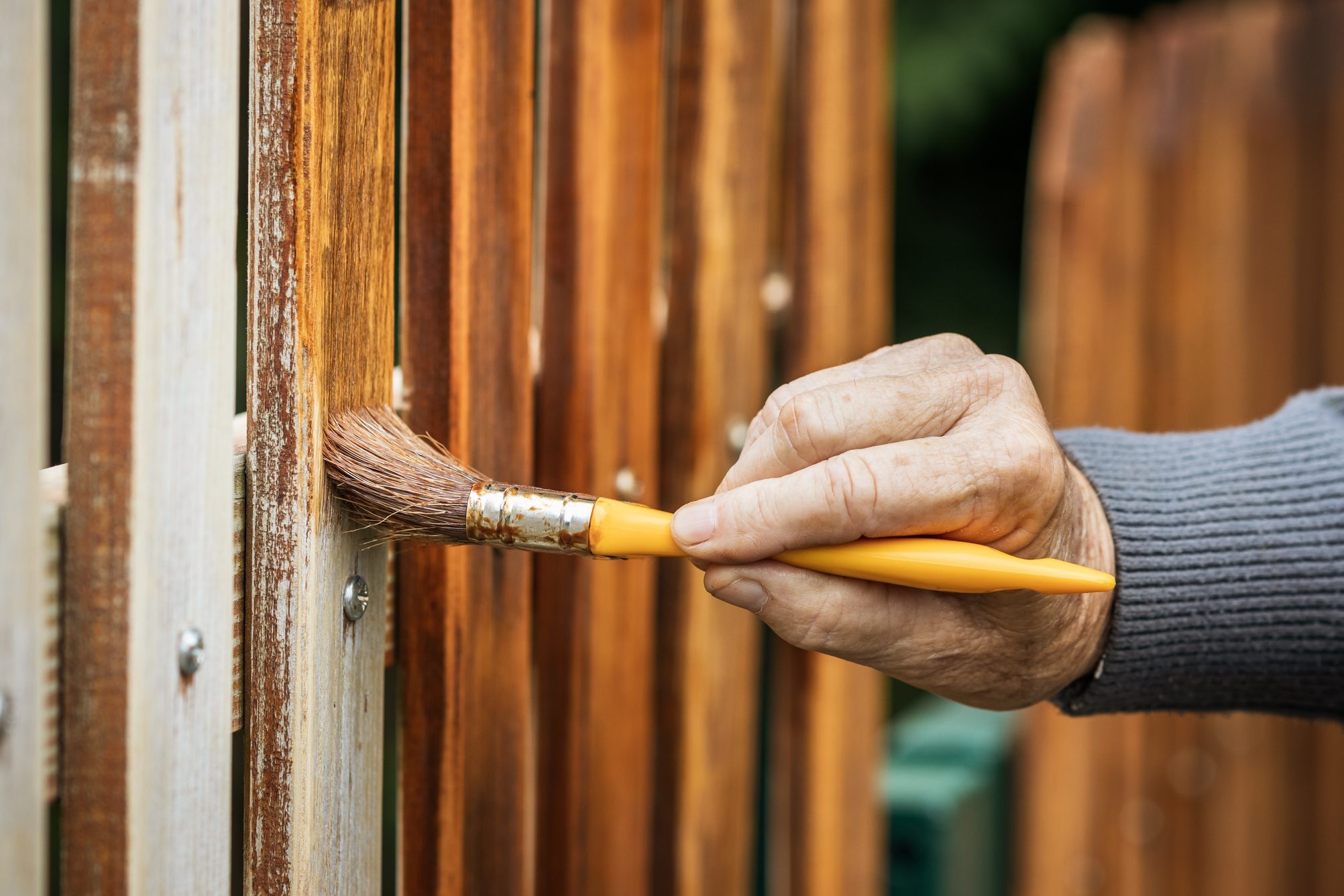Exactly How to Choose the Right Fencing Stain for Your Building
When it comes to improving the appearance and sturdiness of your property's fencing, selecting the ideal discolor is a vital decision that requires cautious consideration. How can you make sure that you choose the perfect fencing stain that aligns with your property's style and upkeep requirements?
Understanding Timber Types
To choose the appropriate fencing stain, it is vital to have a detailed understanding of the numerous sorts of wood commonly made use of for secure fencing. The option of wood plays a critical function in figuring out the long life and total visual appeals of the fencing. Cedar is a popular option as a result of its natural resistance to decay and pests, making it a durable choice for outside structures. Pine is another typical timber utilized in fencing, recognized for its cost and ease of discoloration. Ache is more vulnerable to bending and deteriorating compared to cedar. Redwood is a high-end choice known for its striking appearance and all-natural longevity, though it features a greater cost. When picking a fence stain, it is important to think about the kind of wood being utilized to make sure compatibility and optimum defense. Understanding the attributes of various timber kinds will assist you make a notified decision when it concerns selecting the appropriate fencing discolor for your building - Fence Staining.
Selecting the Right Shade
Picking a suitable color for your fence discolor is an essential decision that dramatically influences the overall visual charm of your residential or commercial property. Lighter colors such as whites or light grays can make a fencing appear larger and add a touch of sophistication to your residential property. Eventually, the ideal shade choice will improve the charm of your fence and elevate the general curb appeal of your home.

Considering Openness Levels
When choosing the ideal color for your fencing discolor, another essential facet to consider is the level of openness that will ideal fit your property's aesthetic and upkeep demands. Transparency degrees in fencing spots typically drop right into three groups: transparent, semi-transparent, and solid. Think about the level of direct exposure your fence deals with, the wanted upkeep frequency, and the visual you want to accomplish when choosing the appropriate transparency level for your fencing stain.
Evaluating Upkeep Demands
Taking into consideration the longevity and maintenance of your fence, assessing the maintenance requirements is crucial in determining the most appropriate fence stain for your building. The degree of upkeep required for your fence can differ relying on variables such as the kind of timber, climate condition in your location, and your personal preferences.
When examining upkeep needs, it is necessary to consider the durability of the fence stain. Some discolorations require more frequent reapplication than others, so selecting a stain with a longer life-span can assist lower the overall upkeep requirements of your fencing (Fence Staining Service). Additionally, variables such as resistance to UV rays, water, and mildew can affect just how usually you need to re-stain your fencing

Checking Examples Prior To Application
Before applying any fence discolor, it is recommended to carry out sample examinations to make sure compatibility with the timber and desired aesthetic result. Testing samples allows you to examine just how the stain will engage with the details type of timber made use of in your fence, as various woods can absorb spots differently. To begin, pick a small inconspicuous location of the fence to use the discolor samples.
Verdict
In final thought, selecting the ideal fencing stain for your building entails recognizing the timber type, picking the right color, thinking about transparency degrees, examining upkeep demands, and testing examples before application look at here (Fence Staining Service). By taking these elements into factor to consider, you can make sure that your fencing discolor matches your building while giving the necessary defense and longevity. Make an educated decision to enhance the appearance and long life of your fence